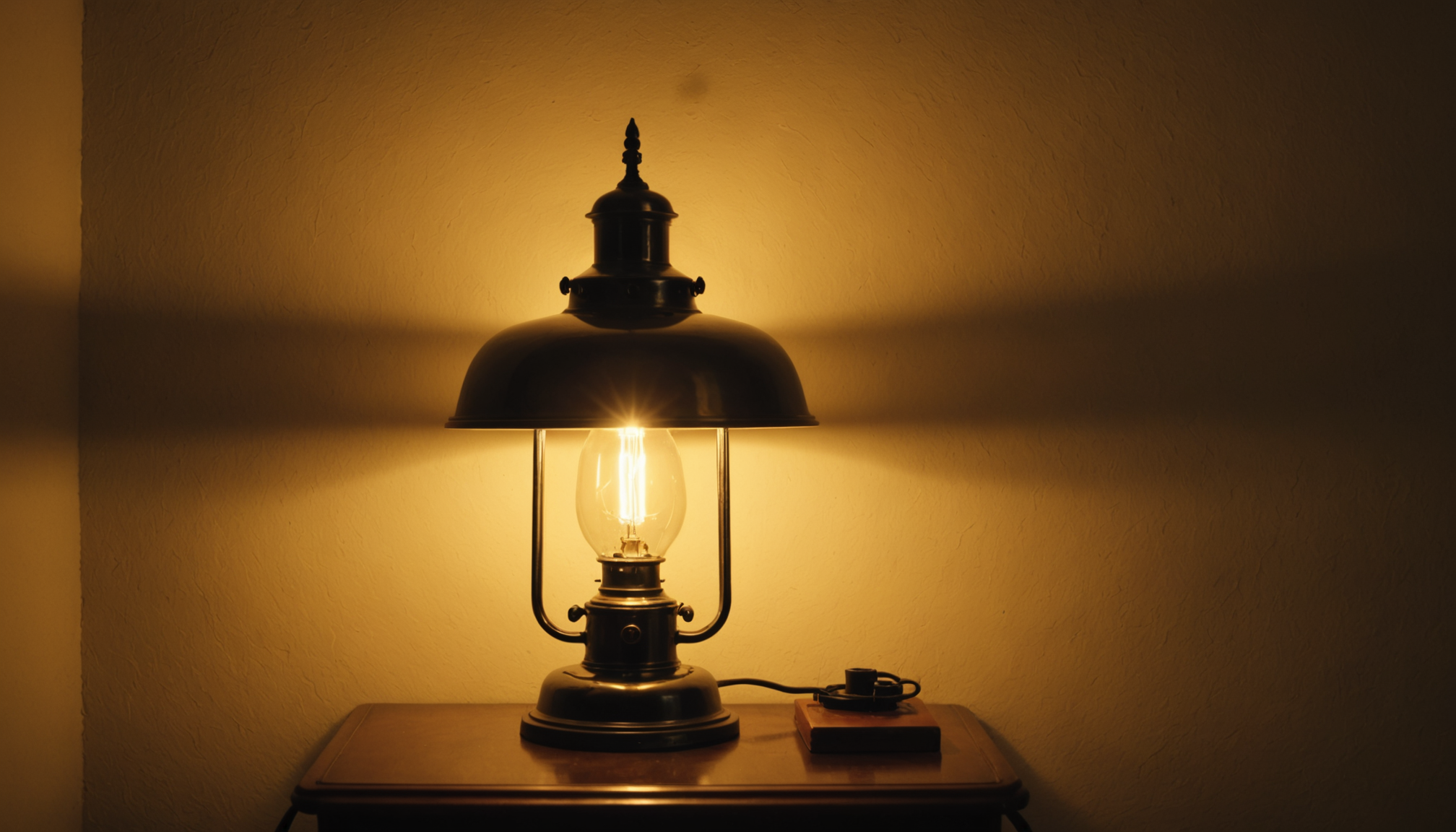Flickering lights in your home might seem like a minor annoyance, but they can be indicative of more significant electrical issues that require immediate attention. When lights flicker intermittently, they can illuminate underlying problems that, if left unaddressed, might lead to more serious electrical hazards.
One common cause of flickering lights is a fluctuation in voltage. Homes are designed to operate with a specific voltage range, and any deviation from this may cause lights to flicker. These fluctuations can occur due to high electrical demand from appliances or even issues with the electricity provider. Additionally, voltage fluctuations might arise from outdated or corroded wiring within the home.
Loose or faulty light bulbs and fixtures are another frequent culprit. When bulbs are not properly screwed in, the contact may not be solid, leading to inconsistent electrical flow and flickering lights. Similarly, light fixtures with worn-out components or improper connections can result in the same phenomenon, which can typically be resolved by checking and replacing the light bulbs or tightening connections.
However, flickering lights might also point towards more severe electrical issues, such as faulty wiring or overloaded circuits. If flickering occurs in multiple fixtures throughout the house, especially when certain appliances are in use, it could indicate an overloaded circuit. This can occur when the electrical system is unable to handle the demand from various appliances simultaneously, necessitating an evaluation of your home’s electrical capacity.
Comparing potential causes of flickering lights could help diagnose the problem more swiftly:
| Problem | Possible Cause | Recommended Action |
| Single light flickering | Loose bulb or fixture issue | Check and tighten bulb/fixture |
| Multiple lights flickering | Voltage fluctuation | Consult with an electrician |
| Flickering when appliances on | Overloaded circuit | Assess circuit capacity and redistribute load |
In cases where flickering is consistent and severe, or if it is accompanied by other symptoms such as buzzing noises or tripped breakers, it’s crucial to seek professional guidance. An electrician can provide a thorough inspection, identify faulty wiring, poor connections, and assess whether the entire electrical system is overloaded or outdated. Proactive measures can prevent potential hazards, ensuring safety and reliability in your home’s electrical operations.
frequent circuit breaker trips
Experiencing frequent circuit breaker trips in your home is a significant warning sign of potential electrical issues that need your attention. A circuit breaker’s primary function is to interrupt the flow of electricity when it detects an overload or a short circuit, thereby preventing overheating and potential fires. Understanding why your circuit breaker trips frequently can help pinpoint underlying problems and guide you in taking necessary corrective actions.
Here’s how to troubleshoot and address frequent circuit breaker trips:
1. Identify the Circuit Responsible for Tripping:
– Locate your home’s electrical panel, often found in basements, garages, or utility rooms.
– Determine which circuit breaker has tripped by looking for one that is in the “off” position or anywhere between the “on” and “off” positions.
– Assess which appliances or fixtures are connected to this particular circuit.
2. Assess Appliance Load:
– Overloading is a common cause for breakers tripping. List all devices plugged into the outlets on this circuit.
– Note the power demand of each appliance. High-power devices, such as air conditioners, space heaters, or microwave ovens, may exceed the circuit’s capacity if used simultaneously.
3. Unplug and Re-assess:
– Unplug or turn off devices connected to the tripped circuit, especially those that draw significant power.
– Reset the circuit breaker by first pushing it to “off” and then to “on.”
– Reconnect appliances one at a time, observing if the breaker trips again. This will help isolate a particular appliance causing the issue.
4. Inspect for Short Circuits:
– A short circuit occurs when a hot wire comes into contact with a neutral or ground wire, allowing an excess of current to flow, immediately tripping the breaker.
– Look for signs of damage or wear, such as frayed wires, broken outlets, or sparking, which may suggest a short circuit.
– If you suspect a short circuit, it’s crucial to stop using the circuit and contact a professional electrician to safely address the issue.
5. Evaluate Circuit Health and Wiring:
– The circuit breaker itself or other components of the electrical system may be defective or old.
– Inspect the breaker to ensure it’s functioning correctly. Circuit breakers can weaken over time and may need replacing if worn out.
– Have an electrician evaluate the wiring to determine if there are deeper issues, like faulty wiring, which might pose future safety risks.
6. Consider Electrical System Upgrade:
– If your home frequently experiences breaker issues despite redistributing the load, it might be time to upgrade the electrical system.
– Older homes may have outdated wiring or insufficient circuit capacity for modern appliances. Upgrading the wiring or adding new circuits can enhance safety and functionality.
By addressing these steps, you can often resolve the issues causing frequent circuit breaker trips. Additionally, seeking assistance from a certified electrician is always recommended if the problem persists, as they can conduct a thorough inspection and provide expert solutions to protect your home from potential electrical hazards.
burning odor or charred outlets
Noticing a distinct burning odor or seeing charred outlets in your home can be alarming signs of electrical trouble that require prompt attention. These indicators often suggest severe underlying electrical issues that could escalate into dangerous situations if not addressed swiftly.
The presence of a burning smell, particularly that of hot or melting plastic, is typically a sign that wires or components within your electrical system are overheating. This overheating can result from a number of causes, such as overloading the circuit, faulty wiring, or loose connections. When wires overheat, their insulation can become damaged, leading to sparking or further heating, which increases the risk of fire.
Charred outlets signal an even more direct warning of danger. These scorch marks may appear around electrical outlets if a connection has failed, leading to short circuits or sparking. The black or brown residues around the outlet are the result of electrical arcing, which not only damages the outlet itself but can potentially ignite any flammable materials nearby.
To address such issues, it is crucial to take immediate measures:
1. Turn Off Power Immediately: If you detect a burning smell or notice charred outlets, cut off the power supply to the affected area by switching off the circuit breaker. This can prevent further damage and reduce the risk of fire until the problem is resolved.
2. Avoid Using the Affected Outlet: It’s essential not to use any outlets or switches that show signs of damage. Continuing to use these can exacerbate the problem, potentially leading to more severe incidents.
3. Inspect Electrical Devices and Cords: Appliances or cords that could be contributing to the burning smell should be inspected for damage. Torn insulation or frayed wires need replacing, and any defective appliances should not be used until they’ve been repaired or replaced.
4. Engage a Professional Electrician: Given the potential severity of these issues, consulting a professional electrician is advisable. An electrician can safely and accurately identify the source of the problem, whether it be overloaded circuits, poor-quality wiring, or malfunctioning appliances. They can then recommend effective solutions to rectify the issue and ensure it does not reoccur.
5. Consider Upgrading Electrical Systems: Older homes may have outdated electrical systems not designed to handle modern appliances’ power demands. Upgrading the wiring, panels, or the entire electrical system might be necessary to maintain safety and support current and future electrical usage requirements.
Promptly addressing these signs not only alleviates immediate danger but also contributes significantly to the overall safety of your living environment. Maintaining vigilance for burning odors and charred outlets and taking swift action can prevent potential disasters, keeping your home secure and your family safe from electrical hazards.
unusual buzzing noises
Detecting unusual buzzing noises in your home can be a subtle yet important indication of electrical issues that should not be overlooked. Such noises, often likened to a persistent or sporadic hum or drone, can arise due to various electrical problems, and addressing these concerns promptly can help avert more serious hazards.
One common source of buzzing sounds within a home is related to electrical outlets or switches. Wires that aren’t fully secured in their terminals can cause the connections to become loose, resulting in a buzzing noise due to the slight vibrating of the wires against their fittings. This is more than just an annoyance; it’s a sign that there could be an unstable or poor connection which, if left unaddressed, could lead to overheating or even sparking.
Similarly, buzzing noises emanating from appliances can often point to issues either with the appliance itself or with the electrical circuit it is connected to. Misaligned or faulty components within a device can lead to internal buzzing, while an overloaded circuit might struggle to provide adequate power, causing the appliance to operate inefficiently and produce humming sounds as a result.
Another potential cause of buzzing comes from the circuit breaker box. Circuit breakers or fuse boxes that emit a humming sound could be indicating a problem with the breaker itself. Under normal circumstances, circuit breakers should operate quietly. A buzzing noise might suggest that there is a heightened electrical load on the system or that the breaker is failing to trip when it should, signifying an overload or faulty wiring within the system.
Transformers, especially within older homes, can also lead to buzzing sounds. These devices convert high voltage electricity to a lower voltage suitable for dwelling use, and any malfunction or age-related wear could result in a noticeable hum.
To proactively manage these issues, consider the following actions:
1. Immediate Inspection and Evaluation:
– Investigate buzzing sounds as soon as they are noticed to determine their origin. Check outlets, switches, and nearby appliances to locate the source of the noise.
2. Check for Loose Connections:
– If you determine the buzzing is due to a loose outlet or switch, cut the power to the affected area and conduct a safe, visual inspection. Loose wiring should be promptly addressed by tightening connections or seeking professional help for reassessment.
3. Evaluate Appliance Performance:
– If the noise appears to be coming from an appliance, switch off the appliance and check for any obvious abnormalities or signs of wear. If the problem persists, consult a professional for diagnosis and repair.
4. Circuit Breaker Assessment:
– A buzzing circuit breaker warrants immediate attention. Resetting the breaker might resolve the issue temporarily, but persistent noises should be evaluated by a licensed electrician who can assess whether the breaker is defective or worn out.
5. Professional Help and Upgrades:
– Engage a professional electrician to carry out a thorough inspection of your home’s electrical system if buzzing noises persist. Older systems may need updates or repairs to ensure they continue to meet safety standards.
By maintaining awareness and quickly addressing any unusual buzzing noises, you can help prevent potential electrical mishaps, ensuring your home remains safe and operational. Remember, while some electrical issues might seem benign at first, they can escalate if neglected, so it’s always best to err on the side of caution.
hot or sparking electrical outlets
Sparking or hot electrical outlets are signs of severe electrical problems that require immediate intervention to ensure your home’s safety. When an outlet feels hot to the touch or produces sparks, it suggests that an excessive amount of electrical current is being drawn, which could lead to dangerous overheating or even an electrical fire. This situation is often caused by worn-out or damaged wiring, which may result in insufficient or loose connections inside the outlet. Such issues increase resistance and consequently produce heat, leading the outlet to become dangerously hot.
Additionally, overloaded circuits are another common reason for sparking outlets. When too many high-draw devices are connected to the same circuit, it can exceed the circuit’s capacity, causing sparking and overheating. Using outdated or damaged plugs and cords can also cause sparking, as the worn insulation or frayed wires can allow for a direct contact between conductive parts, resulting in short circuits and sparking.
If you encounter a sparking outlet, it’s crucial to act quickly:
1. Cut Power: Turn off the electricity to the outlet at the circuit breaker to prevent further sparking or potential fire hazards. Leaving a problematic outlet powered on can significantly escalate the risk of damage or injury.
2. Assess and Stop Usage: Disconnect any devices that were plugged into the problematic outlet. Do not attempt to use the outlet until a professional has evaluated it and confirmed it is safe.
3. Visual Inspection: Inspect the outlet for visible signs of damage, such as scorch marks or melted plastic. These signs indicate severe overheating, and using the outlet in this state could lead to dangerous outcomes.
4. Avoid Overloading Outlets: Redistribution of appliances and electrical devices across different circuits can help prevent overloading individual outlets. Ensure that extension cords and power strips are used appropriately, and refrain from plugging in too many devices simultaneously.
5. Professional Assessment: Have a licensed electrician examine the sparking outlet. They can assess the wiring behind the outlet, identify whether the issue stems from the outlet itself, the devices being used, or the home’s electrical system, and provide necessary repairs or recommendations.
Ultimately, maintaining your home’s safety requires proactive monitoring of its electrical health. By staying vigilant for signs such as flickering lights, frequent circuit breaker trips, burning odors, unusual buzzing noises, and hot or sparking outlets, you can address electrical issues before they escalate into more dangerous situations. Consulting with professional electricians and upgrading your electrical system as needed will help ensure that your home’s electrical infrastructure remains safe, efficient, and capable of supporting your lifestyle.


